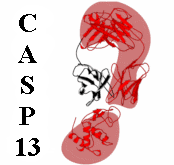 CASP is the Critical Assessment of Protein Structure Predictions, a biannual “competition” to determine which prediction algorithm generates the most accurate model. There are several categories in which models will be assessed, including accuracy, topology, and biological relevance. Led by Molecular Biology and Integrated Bioimaging (MBIB) Division research scientists Greg Hura and Susan Tsutakawa, the SIBYLS beamline at the Advanced Light Source is participating again this year to provide small-angle X-ray scattering (SAXS) data for the “data-assisted” category. The team, which consists of Hura, Tsutakawa, Tad Ogorzalek, Soumya Remesh, Kathryn Burnett, and Daniel Rosenberg, will collect SAXS data, both in high-throughput mode and with their newly implemented size exclusion chromatography (SEC)-SAXS mode. Crystallographers, who generously provide the CASP judging committee their unreleased structure, provide protein for SAXS analysis. Jose Henrique Pereira, an MBIB research scientist, is one of the crystallographers who will be providing an unknown structure for validation.
CASP is the Critical Assessment of Protein Structure Predictions, a biannual “competition” to determine which prediction algorithm generates the most accurate model. There are several categories in which models will be assessed, including accuracy, topology, and biological relevance. Led by Molecular Biology and Integrated Bioimaging (MBIB) Division research scientists Greg Hura and Susan Tsutakawa, the SIBYLS beamline at the Advanced Light Source is participating again this year to provide small-angle X-ray scattering (SAXS) data for the “data-assisted” category. The team, which consists of Hura, Tsutakawa, Tad Ogorzalek, Soumya Remesh, Kathryn Burnett, and Daniel Rosenberg, will collect SAXS data, both in high-throughput mode and with their newly implemented size exclusion chromatography (SEC)-SAXS mode. Crystallographers, who generously provide the CASP judging committee their unreleased structure, provide protein for SAXS analysis. Jose Henrique Pereira, an MBIB research scientist, is one of the crystallographers who will be providing an unknown structure for validation.
Predictors are given the amino acid sequence, the best quality SAXS data, and two weeks. An added challenge for predictors is that the SAXS data represents the conformation in solution, which includes disordered regions (most samples) and multimers (~50 percent of the samples). This CASP competition should lead to improvement in predicting protein-protein interfaces and complex structures. SIBYLS, for the first time, will be in charge of judging the data-assisted category. Rankings will be announced at the CASP meeting in December.



